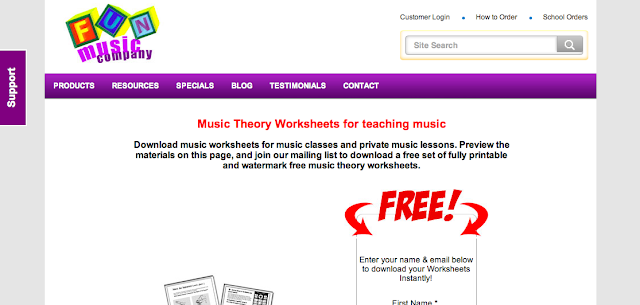Band Course Cost Payment Procedures
Do you have a procedure in place for when students pay for school-owned instrument usage or other course costs? If not, you need one. You've got to have procedures for everything - especially money. I've made it a point to make sure students ALWAYS turn in money in an envelope. I NEVER take money from a student if it is not in a labeled envelope. I only deal with money during my conference period or outside of class (before or after school). I HAVE to be able to concentrate on what I'm doing as dealing with money is a BIG thing and not something I'm naturally all that great at. Not handling money correctly as a band director is one of the fastest ways to lose your job.
If you don't already have a payment lockbox, you can get one on Amazon for under $30. I just ordered this one
which I think will do the job well. Here's the link. In the past, students had to give their payments to a band director because I only had a lockbox with a combination lock on my desk (no slit for students to drop payments in). The assistant directors could never remember the combination so they would put the envelopes in my desk drawers and sometimes money would go missing for a little while because an envelope would fall through cracks in my desk drawer. I didn't feel good about the money not being locked up either. Now that I've ordered the above box with a slit, the box can be mounted and I can check it daily.
So first of all, let's talk about our expectations for the students. We require ALL of our band students to pay an annual $50 course cost that covers their end of the year band contest trip, t-shirt, sheet music, and more. Students using a school-owned instrument must also pay an annual $50 usage fee. If students have financial difficulties, we make arrangements to allow students to work off their payments. However, we receive payments from most of our students. They are required to put their payments in sealed envelopes labeled with their first and last name, amount enclosed and what the payment is for. I have created a sign that I will laminate and either tape to the top of the envelope box or hang up near the box of envelopes. (We provide envelopes for students who do not bring their money already in an envelope). You can download a PDF of the sign here. If you are fortunate enough to have budget money to print envelopes that have blanks for the students to just fill in, that's great. However, it is easy enough to just have the students label their envelopes. Once filled out, they just drop the envelope in the slit in the mounted lockbox.
Now, what is expected of you as the director who handles finances at your school will be slightly different depending on your school secretary, administration and district financial department. Over my fifteen years as a head middle school band director at three different schools and districts, things have been slightly different and have even changed year to year within the same school and district. However, I make sure to always do the same things when handling money.
1. Use a receipt book with carbon copies. Many districts will provide the receipt books and require you to turn them in each year (or more often if audited). Every time I deposit money for anything, I write a receipt. I do give the students a receipt (some give it to their parents, some toss it). At any rate, the carbon copy is evidence of making the deposit. I ALWAYS write the student's name on the receipt (not the parent) to help with record keeping.
2. Document deposits and withdrawals electronically. If you have Quickbooks or something similar, great. You can also easily keep track in GoogleSheets. Set formulas to calculate your balance as you add entries for deposits and withdrawals. I have a sheet for our Activity Account, one for local funds spent through Fine Arts and one for local funds spent through my campus.
3. Keep track of student accounts and issue bills if needed. Again, using GoogleSheets, I've created spreadsheets with rosters of all of our students. I have tabs for each group (Beginners, Concert Band, Symphonic Band, Honors Band, Jazz Band). As students make payments, I keep track on these spreadsheets. Once a six weeks, I print bills. I can use the mail merge feature in Word with these spreadsheets and easily print bills.
4. When making deposits, follow your district's policies and fill out whatever paperwork is required. Make copies of your deposit sheets and checks. That way you have documentation if someone else makes a mistake. You can scan them and digitally save them in a folder.
5. When making purchases, paying contest fees, etc., follow your district's policies and fill out whatever paperwork is required. Again, make copies/scan and save. Make sure when making purchase requests, that what you are requesting is on the district vendor list and that you've gotten an accurate price quote - there are often music educator discounts. And don't forget to include cost for shipping.
Again, money is a pretty scary part of the job. And unless things have changed, there really isn't much attention to this in music education programs in college. It's one of those learn on the job type things. I'm definitely not an expert and am still learning, but I hope I've been able to help someone out there who might be nervous about dealing with money. It is less scary when you've got some solid processes in place.




Comments
Post a Comment